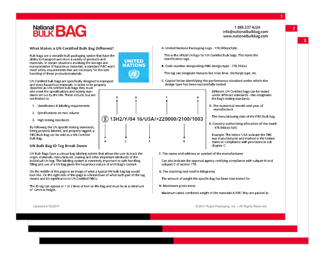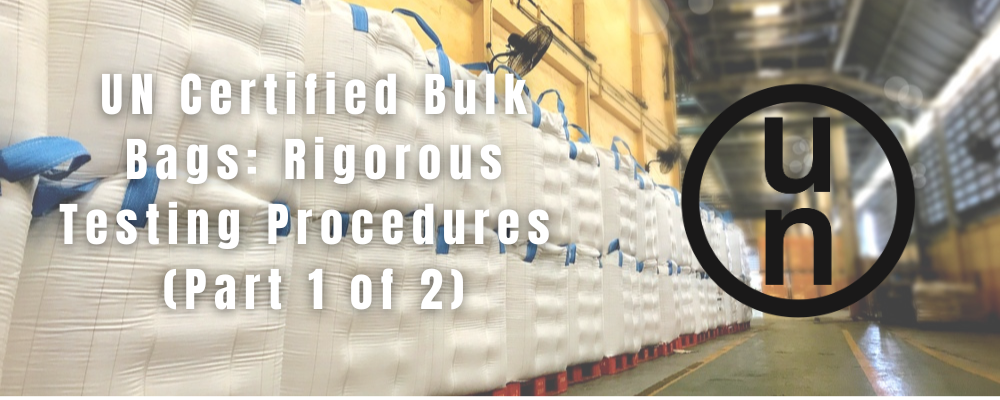Updated: 8-13-25
Transporting and storing hazardous materials is challenging and you must follow strict safety rules. Because these materials can be dangerous, a special type of bulk bag is needed: a UN Certified Bulk Bag.
Whether you're dealing with chemicals, flammable substances, or materials that pose a risk of contamination, UN Certified Bulk Bags offer the durability and reliability needed to keep your operations safe and compliant.
What Makes a Bag “UN Certified”?
A UN Certified Bulk Bag is a type of FIBC (Flexible Intermediate Bulk Container) that passes a series of tests. These tests follow guidelines set by the United Nations. The goal is simple: make sure the bag can handle tough conditions without failing.
Industries that use these bags include:
- Chemical production
- Pharmaceuticals
- Mining & Minerals
- Agriculture – for fertilizers and pesticides that are considered hazardous
- Hazardous Waste disposal
Hazardous materials are involved; these bags are part of the solution.
How Testing Works
Each bag goes through several steps before it’s certified. Here’s what that process looks like.
1. Bag Preparation
Before testing starts, the bag must be:
- Filled at least 95% full
- Packed evenly
- Tested with either the actual material or a safe substitute with similar weight and texture
This setup helps simulate real-world use.
2. Vibration Test
All UN Certified bags must be capable of pass this test. The bag sits on a vibration table for 60 minutes. The frequency is high enough to lift the bag slightly off the vibration table platform. To pass, the bag must not rupture or leak.
3. Top Lift Test
This test checks how the bag holds up when lifted from the top and/or side. It’s loaded with six times its rated weight and lifted for five minutes. The bag must not lose shape or cannot loose any contents.
4. Stack Test
The stacking test is required for all FIBCs that are designed to be stacked. It’s tested with a heavy load on top for 24 hours. The weight equals 1.8 times the total weight of the bags that might be stacked. The bag must stay intact and not leak to pass this test.
Why It Matters
Hazardous materials need the right packaging. Using bags that aren’t certified can lead to fines, spills, and serious safety risks. UN Certified Bulk Bags are tested to meet strict standards. They help keep workers safe and protect the environment.
To see which certified bags are available, check current stock at National Bulk Bag.
For updates on packaging for hazardous goods and other industrial uses, use the form on the right to subscribe.
Looking for More Information?

Thanks for reading Part 1 of a 2-part series on UN Certified Bulk Bags and their testing process. Check out Part 2 here.
Click here to chat with a UN Certified Bulk Bag specialist about In-Stock Bags.
To learn more, download the Buyer’s Guide to UN Bulk Bags.
This guide includes:
- What makes a UN certified bulk bag different?
- UN Bulk Bag ID tag break down
- Details on testing procedures
- A Hazardous Materials Chart
Be sure to read this guide before purchasing UN bulk bags!






